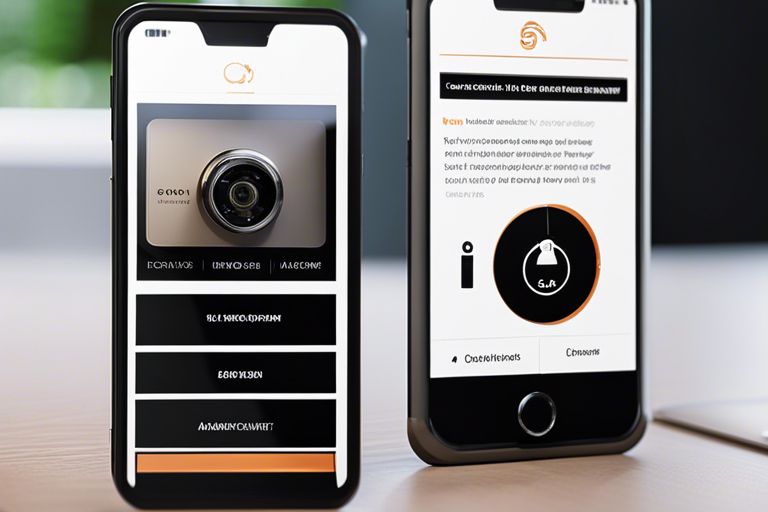In today’s fast-paced digital world, incident detection plays a crucial role in ensuring the security and wellbeing of an organisation. Timely detection of incidents can help prevent data breaches, financial losses, and reputational damage. By swiftly identifying and responding to security incidents, businesses can minimise the impact and prevent them from escalating into larger, more serious threats. Implementing robust incident detection mechanisms is imperative for any organisation looking to protect its assets and maintain the trust of its customers. Stay informed about the significance of incident detection and learn how it can safeguard your business from potential harm.
Key Takeaways:
- Incident detection is crucial: Identifying incidents promptly is vital to prevent further damage and mitigate potential risks.
- Minimises impact: Early detection allows for a quicker response, reducing the impact an incident can have on an organisation.
- Enhances security posture: Constant monitoring and detection of incidents help enhance the overall security posture of an organisation.
- Improves incident response: Timely detection enables a more effective incident response, leading to better handling of security breaches.
- Ensures compliance: Incident detection is often a requirement for regulatory compliance, making it necessary for organisations to meet legal standards.
Fundamentals of Incident Detection
Key Principles of Incident Detection Systems
Key principles of incident detection systems revolve around timely detection, accurate analysis, proactive alerts, effective response mechanisms, and continuous monitoring. These systems are designed to detect anomalies, unusual activities, and security breaches in real-time, providing organisations with the ability to respond promptly and mitigate potential risks.
Types of Incident Detection Technologies
Types of incident detection technologies include Intrusion Detection Systems (IDS), Security Information and Event Management (SIEM) systems, Network Behaviour Analysis (NBA) tools, Endpoint Detection and Response (EDR) solutions, and User and Entity Behaviour Analytics (UEBA) platforms. These technologies play a crucial role in monitoring and analysing network traffic, system logs, user behaviour, and endpoint activities to identify potential security incidents.
| Intrusion Detection Systems (IDS) | Monitors network traffic for malicious activities |
| Security Information and Event Management (SIEM) systems | Centralises log management and correlation for holistic security monitoring |
| Network Behaviour Analysis (NBA) tools | Analyses network traffic patterns for abnormal behaviour detection |
| Endpoint Detection and Response (EDR) solutions | Monitors endpoint devices for signs of compromise and responds to incidents |
| User and Entity Behaviour Analytics (UEBA) platforms | Focuses on user behaviour to detect insider threats and abnormalities |
The Impact of Efficient Incident Detection
Enhancing Safety Measures
Efficient incident detection plays a crucial role in enhancing safety measures within an organisation. By promptly identifying and responding to incidents, companies can prevent potential hazards from escalating, ensuring the well-being of employees and the protection of assets. Implementing robust incident detection systems enables proactive safety measures to be put in place, creating a secure work environment for all.
Reducing Economic Losses and Business Interruption
Efficient incident detection not only enhances safety but also significantly contributes to reducing economic losses and minimising business interruption. Quick identification and swift resolution of incidents prevent extensive damage, ultimately saving on repair costs and downtime. Businesses can maintain operations smoothly, avoiding financial setbacks and reputational damage that may arise from prolonged interruptions.
Moreover, timely incident detection and response can prevent the spread of incidents, averting larger-scale emergencies that could lead to catastrophic losses. By investing in efficient incident detection, organisations can secure their financial stability and sustain business continuity in the face of unforeseen events.
Challenges in Incident Detection
Dealing with False Positives and Negatives
One of the primary challenges in incident detection is the presence of false positives and negatives. False positives occur when a system incorrectly identifies normal behaviour as malicious, leading to unnecessary alerts and wasted resources. On the other hand, false negatives occur when actual incidents go undetected, allowing threats to persist undetected. It is crucial for organisations to fine-tune their detection mechanisms to minimise false alerts while ensuring that genuine incidents are not overlooked.
Integration with Existing Systems and Infrastructure
Integrating new incident detection tools with existing systems and infrastructure can be a complex process. Seamless integration is imperative to ensure that the new tools can effectively communicate and work in tandem with the current security measures. Failure to integrate properly can lead to fragmented security controls and gaps in protection, leaving the organisation vulnerable to cyber threats.
Organisations need to carefully plan and test the integration of new incident detection tools to prevent compatibility issues and ensure a smooth transition. Additionally, they should provide adequate training to employees to effectively use the new tools within the existing infrastructure. By establishing clear communication channels between different systems, organisations can enhance their overall security posture and better protect against advanced threats.
Best Practices and Future Trends
Developing Organisation-Specific Incident Response Plans
Developing organisation-specific incident response plans is crucial for effectively mitigating and responding to security incidents. These plans should outline clear procedures for identifying, containing, eradicating, and recovering from incidents. Organisations must customise their plans to address their unique risks and capabilities to ensure a swift and efficient response when an incident occurs.
Leveraging Artificial Intelligence and Machine Learning
Leveraging artificial intelligence (AI) and machine learning (ML) in incident detection can significantly enhance an organisation’s security posture. These technologies have the ability to analyse vast amounts of data in real-time, identify anomalies and patterns, and detect potential threats before they escalate. By automating certain processes, AI and ML tools enable security teams to focus on more complex tasks and improve overall incident response times.
The Importance of Incident Detection
Incident detection is crucial for ensuring the security and smooth operation of any system or network. By promptly identifying and responding to incidents, organisations can mitigate potential damages, prevent data breaches, and safeguard their reputation. Implementing robust incident detection measures, such as intrusion detection systems and security monitoring tools, is important for effective cybersecurity management. Regularly reviewing and updating incident response plans and conducting thorough post-incident analyses are also vital components of a proactive approach to incident detection. Investing in incident detection capabilities is not only a prudent security measure but a necessary one in today’s digital landscape to mitigate risks and protect valuable assets.
FAQ
Q: Why is incident detection important?
A: Incident detection is important as it helps in identifying security breaches and cyber threats in a timely manner, allowing for a swift response to mitigate potential damages.
Q: What are the key benefits of incident detection?
A: The key benefits of incident detection include early threat identification, minimising the impact of security incidents, improving response times, and enhancing overall cybersecurity posture.
Q: How does incident detection contribute to overall cybersecurity?
A: Incident detection plays a crucial role in strengthening overall cybersecurity by providing insights into vulnerabilities, enabling proactive threat management, and assisting in the continuous improvement of security measures.
Q: What are some common techniques used in incident detection?
A: Common techniques used in incident detection include log analysis, intrusion detection systems (IDS), security information and event management (SIEM) solutions, network monitoring, and endpoint detection and response (EDR) tools.
Q: How can businesses improve their incident detection capabilities?
A: Businesses can improve their incident detection capabilities by investing in advanced security technologies, conducting regular security audits and assessments, providing training to staff on recognising potential threats, and establishing a well-defined incident response plan.






